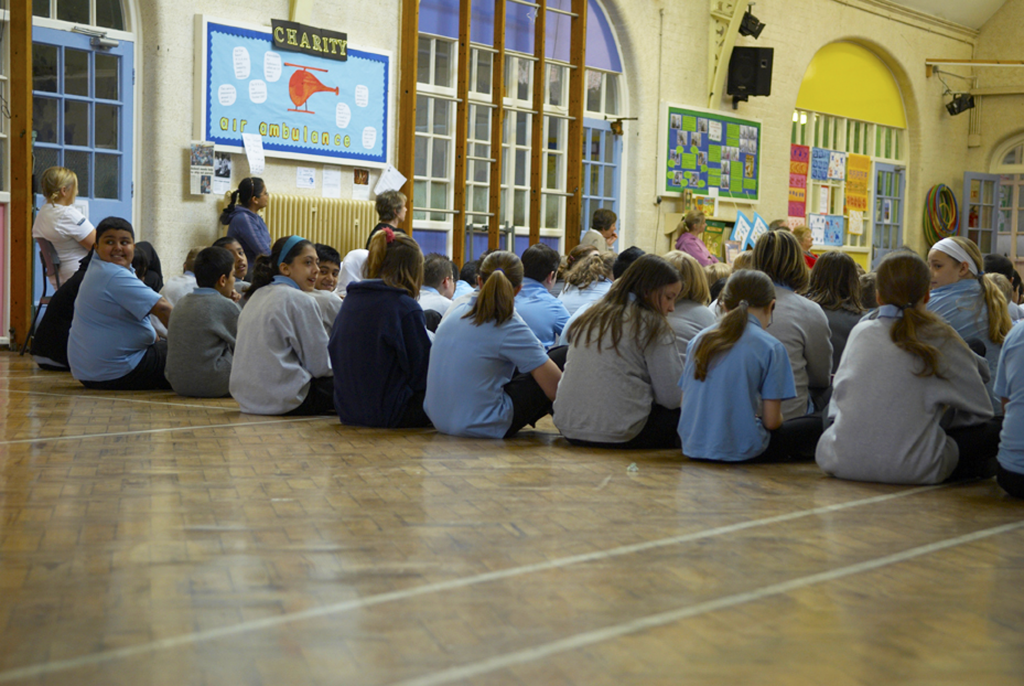
It was on the day the population passed seven billion the idea of the book Twenty First Century Assembly and Classroom Activities became a firm idea in my mind. Like many people I paused to consider how the earth could possibly support such a population. Even more frightening was the fact that the population would rise to eight billion by 2025. However, that wasn’t the only event that day that triggered the thought processes behind the book.
The second event came later the same evening I was walking through the streets of Nottingham on the way to the theatre. Ahead of me was a Big Issue seller, a lady wrapped in several layers of warm clothing to keep out the December chill. She was politely trying to sell her wares. Like all Big Issue street vendors she was wearing a luminous, bright, high visibility jacket. These are worn for protection. Frighteningly in twenty first century Britain a Big Issue seller has a one in three chance of being mugged for the small amount of cash they may hold. I didn’t necessarily see this elderly lady being robbed, but I did witness her being attacked. A group of half a dozen teenage girls walked towards her chanting, “Scrounger, Scrounger Scrounger!” They then grabbed the magazines from her hands and tossed them on to the floor in a crumpled heap. They moved on into the distance shrieking and laughing whilst the lady sat on a nearby wall weeping and uttering the words, ‘I am not a scrounger, I am not a scrounger’, and of course she wasn’t, because anybody who was more enlightened about how the Big Issue works would know that she was being trained to be an entrepreneur. The philosophy of the organisation is to ‘offer a hand up not a hand out’. This was the second event which triggered the book.
I read that the current generation passing through our schools is referred to as Generation Z. The eras of the Baby Boomers, Yuppies and Millenials are behind us. The young people passing through our schools today recognise the significant challenges the world faces. They see so-called leaders who have created political and financial turmoil. Acts of violence and terrorism seem to be broadcast daily. Youngsters see their parents’ generation as the first who grew up as latchkey kids, and then became adults who were saddled with debt. As a consequence they work excessively long hours and then seem to be divorcing in record numbers. As a result Generation Z are smarter, safer more mature and they want to change the world, whilst living a more sober life style. The young six-year-old child may still struggle to fasten his shoelaces, but he will be more technologically competent than many of those ten times his or her age, and will already being seeing the challenges ahead. The typical member of Generation Z will look to the likes of Malala Yousafzai as their role models because she is an activist seeking beneficial change for the world
So how do we as teachers help Generation Z to change the world? I have long promoted a curriculum model that is partially based on children imagining what a better world might look like. Many would argue that the curriculum is already overcrowded and there is little room for anything to be added. As an educational consultant I have long been less interested in what you teach but how you teach it. For example the Human Geography section of the National Curriculum pays scant regard to humans or the challenges associated with growing up in rapidly changing communities. Some teachers will help pupils to have a clear set of notes in their exercise books about how certain villages developed in a ribbon like manner alongside roads whilst other teachers will bring the human element of the subject to life by exploring the richness and diversity of modern Britain.
The teachers who do this create young people with the five minds they will need for the future. Firstly they develop youngsters with a disciplined mind that holds key knowledge and skills. Secondly the pupils and students will have a synthesising mind that sees the links between subjects. The third mind being developed is creative, as it constantly asks questions and seeks solutions. Fourthly learners develop a respectful mind, which allows them to celebrate the diversity of other people and cultures and finally there is an ethical mind that allows a person to behave responsibly.
The curriculum could be overcrowded (though I am not totally convinced by the argument). However as an experienced school improvement professional I believe that there is one key element of the school day that could be used to create greater impact. Far more could be made of school assemblies, and all the suggestions that follow also refer to the use of Philosophy for Children in the Classroom.